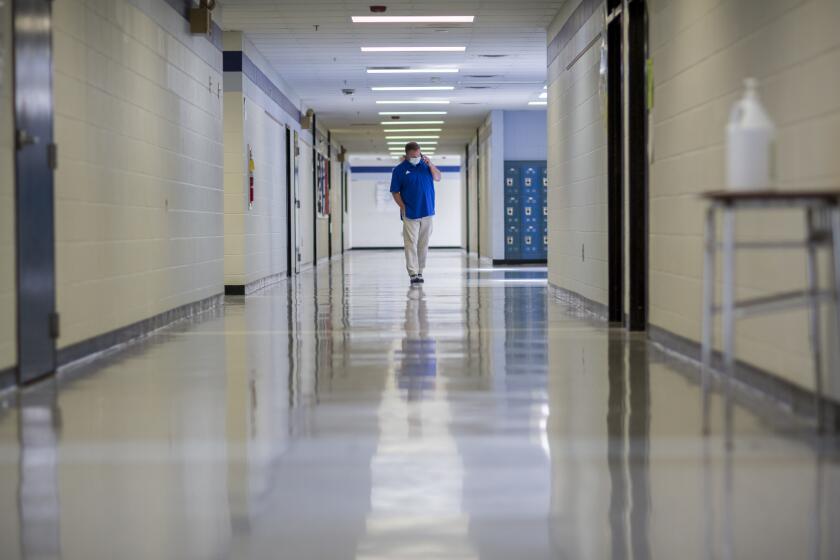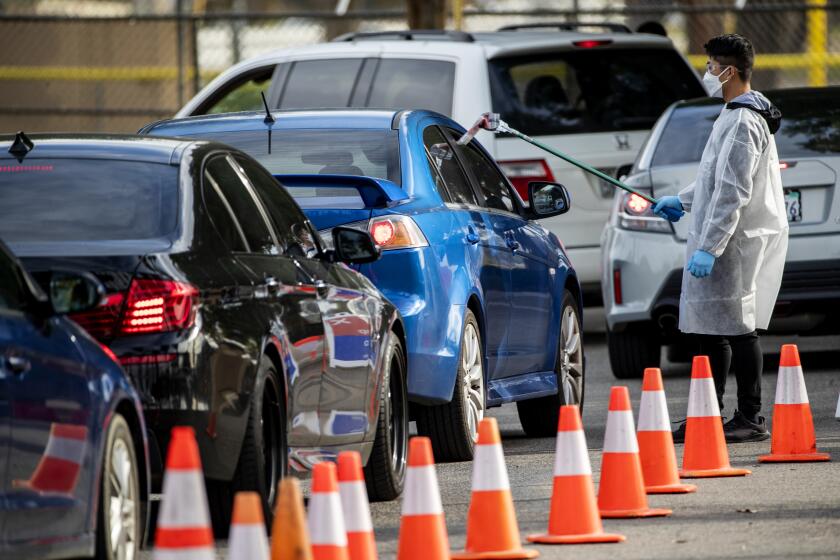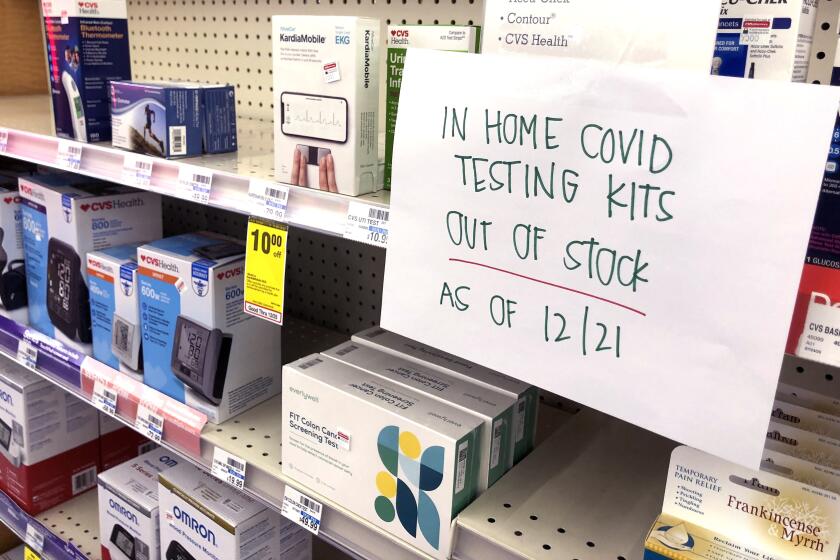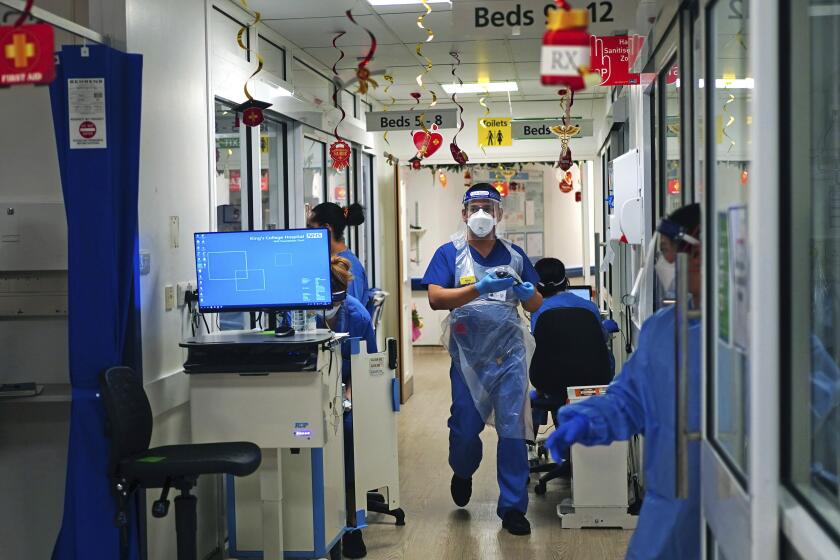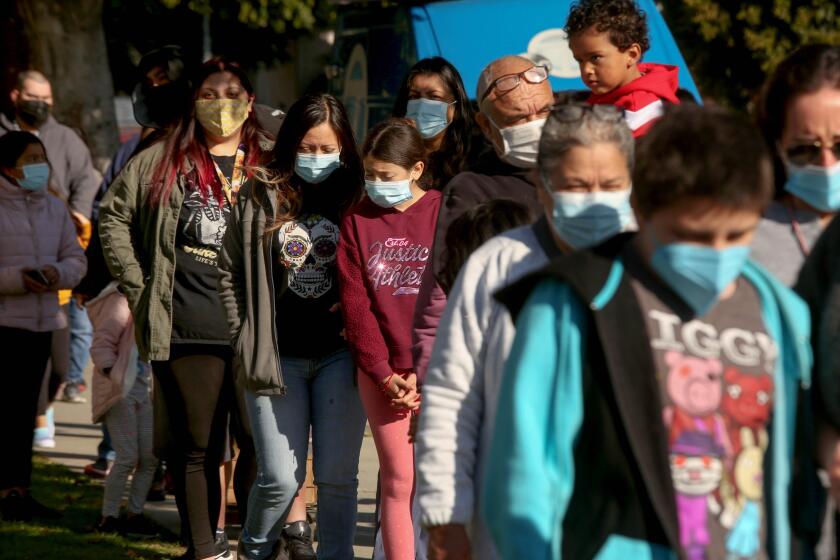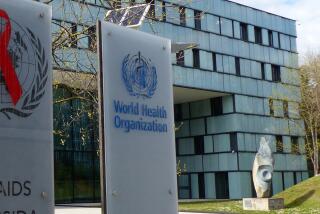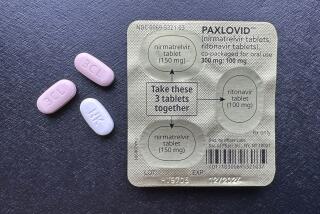CDC move to shorten COVID isolation causes confusion and doubt
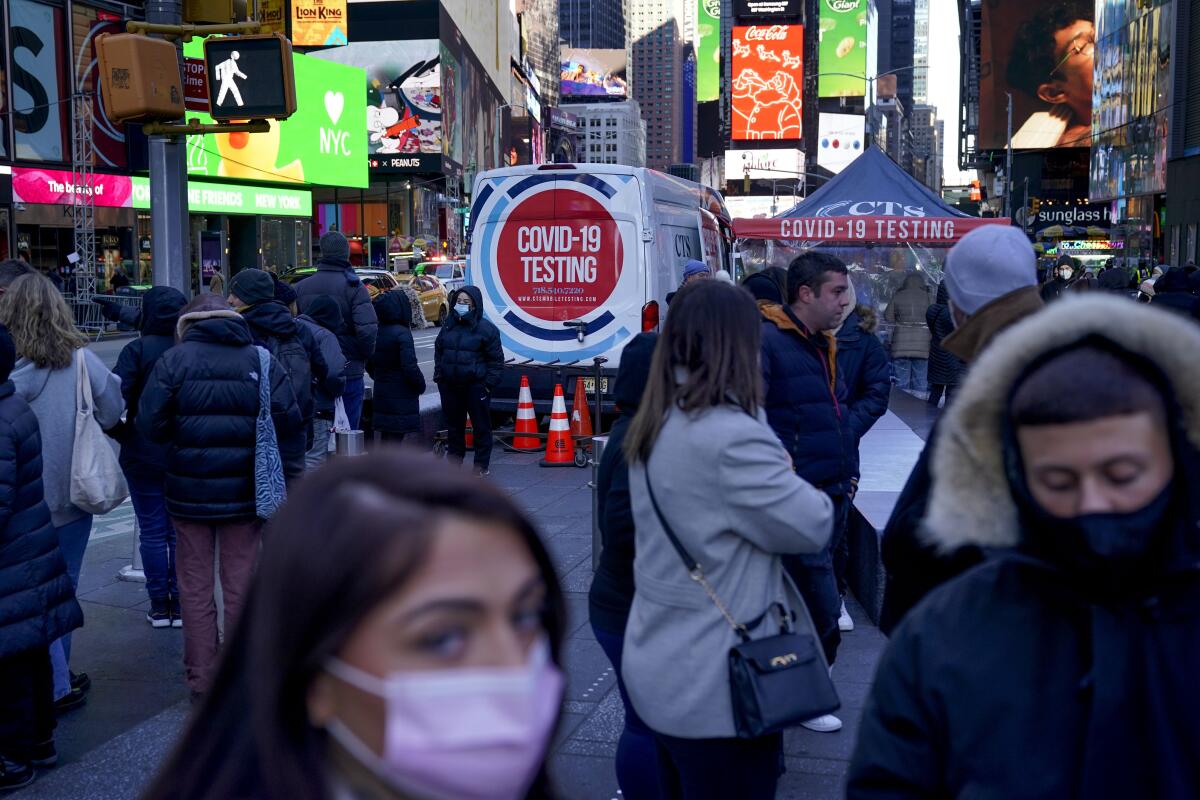
- Share via
WASHINGTON — U.S. health officials’ decision to shorten the recommended coronavirus isolation and quarantine period from 10 days to five is drawing criticism from some medical experts and could create confusion among many Americans.
The move has raised questions about how the guidance was crafted and why it was changed now, in the middle of a wintertime spike in cases driven largely by the highly contagious Omicron variant.
Monday’s action by the Centers for Disease Control and Prevention cut in half the recommended isolation time for Americans who are infected with the coronavirus but have no symptoms of COVID-19. The CDC similarly shortened the amount of time people who have come into close contact with an infected person need to quarantine.
The new guidance was issued amid warnings from the business community that the spike in cases could soon cause widespread staffing shortages because of workers being forced to stay home. Already, thousands of airline flights have been canceled over the past few days in a mess blamed on Omicron.
CDC officials said the new guidance is in keeping with growing evidence that people with the virus are most infectious in the first few days.
But other medical experts questioned why the agency’s guidelines allow people to leave isolation without testing.
“It’s frankly, reckless to proceed like this,” said Dr. Eric Topol, founder and director of the Scripps Research Translational Institute. “Using a rapid test or some type of test to validate that the person isn’t infectious is vital.”
“There’s no evidence, no data to support this,” he added.
The CDC reduced isolation restrictions for those with coronavirus infections and shorted the quarantine time for close contacts.
Just last week, the CDC loosened rules that previously called on healthcare workers to stay off the job for 10 days if they test positive for a coronavirus infection. The new recommendations said workers could go back after seven days if they test negative and don’t have symptoms.
Early research suggests Omicron may cause milder illnesses than earlier versions. But the sheer number of people becoming infected — and, therefore, having to isolate or quarantine — threatens to crush the ability of hospitals, airlines and other businesses to stay open, experts say.
“Not all of those cases are going to be severe. In fact, many are going to be asymptomatic,” CDC Director Dr. Rochelle Walensky said Monday. “We want to make sure there is a mechanism by which we can safely continue to keep society functioning while following the science.”
Louis Mansky, director of the Institute for Molecular Virology at the University of Minnesota, said there is a scientific basis for the CDC’s recommendations.
“When somebody gets infected, when are they most likely to transmit the virus to another person?” he said. “It’s usually in the earlier course of the illness, which is typically a day or two before they actually develop symptoms and then a couple of days to three days after that.”
Early research points to mutations in the spike protein. But much remains unknown or unconfirmed.
Research, including a study published in the journal JAMA Internal Medicine in August, backs that up, though medical experts cautioned that nearly all of the data predates Omicron.
The CDC has been under pressure from the public and the private sector, including Delta Air Lines, to explore ways to shorten the isolation time. Airline officials earlier this month sent a letter to the CDC proposing five days of isolation for fully vaccinated people who become infected, with a “testing protocol” to leave isolation.
Mansky said CDC probably didn’t include exit testing in its guidelines for logistical reasons: There is a run on COVID-19 rapid tests amid the spike in cases and the busy holiday travel season. In many places, at-home tests are difficult or impossible to find.
The CDC is “driven by the science, but they also have to be cognizant of the fact of, you know, what are they going to tell the public that they’ll do,” Mansky said. “That would undermine CDC if they had guidance that everybody was ignoring.”
A surge of coronavirus cases tied to the Omicron variant ahead of Christmas weekend has prompted a crush of demand for over-the-counter antigen tests.
Marshall Hatch, senior pastor of New Mount Pilgrim Church on Chicago’s West Side, said he is bracing for some confusion in his congregation. The church has been a strong advocate for testing, vaccinations and booster shots.
Hatch said the CDC’s latest guidance is confusing and “a little incongruous.”
“Either we’re in a surge that we need to take very seriously or are we winding down the pandemic and that’s why we’re shortening the isolation and quarantine times,” he said Tuesday. “They might want to give us a little more information to go with.”
Hatch said some members of the largely Black congregation, particularly senior citizens, are skeptical of information from government.
Here’s what scientists are watching for as they gauge what Omicron has in store for us this winter.
The CDC move follows global efforts to adjust isolation rules, with policies differing from country to country.
England last week trimmed its self-isolation period for vaccinated people who have tested positive for the coronavirus to seven days in many cases, provided two negative lateral flow tests are taken a day apart.
The French government said Monday that it will soon relax its isolation rules, although by exactly how much isn’t yet clear.
Health Minister Olivier Veran said the rule changes will be aimed at warding off “paralysis” of public and private services. By some estimates, France could be registering more than 250,000 new infections per day by January.
Italy, meanwhile, is considering doing away with a quarantine altogether for those who have had close contact with an infected person as long they have had a booster shot. Projections indicate as many as 2 million Italians could be put in quarantine over the next two weeks as the virus spreads.
Health officials say it’s important to improve the fit of face masks and their filtration, going beyond old, loose, cloth face coverings.
The U.S. airline industry applauded the CDC move.
“The decision is the right one based upon science,” said the lobbying group Airlines for America.
But the head of a flight attendants union criticized the change, saying it could lead businesses to pressure sick employees to come back before they are well.
If that happens, “we will make clear it is an unsafe work environment, which will cause a much greater disruption than any ‘staffing shortages,’” warned Sara Nelson, president of the Assn. of Flight Attendants-CWA International.
